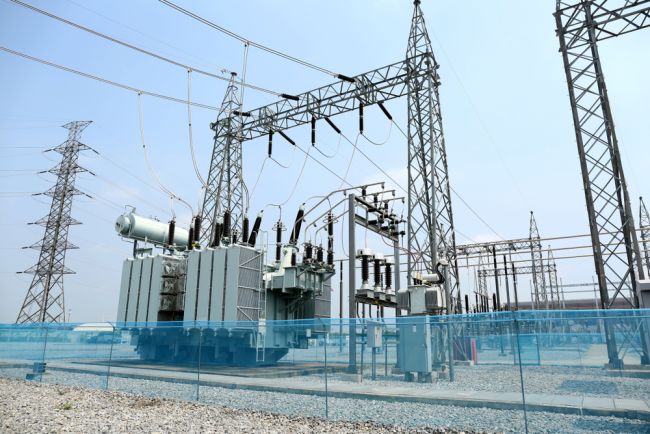
Perimeter Control as the First Line of Defense
Strong perimeter protection can be one of your best investments. But don’t make the mistake of thinking it’s a set-it-and-forget-it endeavor.
For many utilities, physical security begins at the door or the parking lot. However, robust facility protection starts at the perimeter. But we often abandon this defense resource to aesthetics, budget restraints, or misplaced values. This makes a secure perimeter the least considered and most often overlooked element of facility security. However, resilient perimeter protection should be your first line of defense, and establishing and maintaining rigid perimeter security should not be discounted or ignored.
A robust perimeter security system should be an element of a comprehensive asset protection security plan. Developing a solid security plan always begins with a thorough understanding of the threats being faced, the facility’s current security stance, and its vulnerabilities.
First, you need to identify your most significant threats, so begin with a realistic threat assessment. Most people skip this effort and jump straight to the vulnerability assessment. The problem with this approach is that it leads to incomplete planning. You have to know which threats you are trying to defend against. Remember, there are infinite threats but limited resources, and your goal should be the judicious expenditure of security-enhancing resources.
With the threats identified, it’s time to conduct a thorough vulnerability assessment. The outcome of this assessment should be a findings and recommendations report that identifies security gaps, operational weaknesses, and other vulnerabilities, along with impact analysis and mitigation options. The information these two documents provide is the basis of your security plan.
An effective facility security plan will establish concentric zones of increasingly robust protection. For a long time, I was a promoter of the “5-D” security concept of Deter, Detect, Deny, Delay, and Defend. Today, however, I advocate a “6-D” security approach. This newer concept includes Demarcation as a separate element. Previously, demarcation, if considered at all, was a subpart of deterrence. However, with the proliferation of aerial intrusion devices and the increasing number of “First Amendment Auditor” events, demarcation needs to be addressed as a stand-alone effort. So, let’s look at how the traditional 5-Ds of security relate to perimeter protection and then discuss the sixth: demarcation.
Deter
The goal of deterrence is to discourage intrusions by threat actors. Deterrence mechanisms like fencing, barriers, signage, security lighting, and monitoring equipment must be positioned close to the property edge for effective perimeter protection. To be considered a deterrent, they must present a visible countermeasure threat to potential attackers.
Detect
Detection is the positive notification of a perimeter breach. The quicker a security breach is detected, the better. Detection devices and methods include motion detectors, fence sensors, above and below-ground instrumentation, audio and video intrusion technologies, and active human surveillance.
Deny
The deny function is essentially preventing unauthorized access. The goal is to restrict entry to authorized personnel. Deny prevention measures include breach-resistant fencing and entry control systems ranging from simple mechanical locks to electronic access controls, security gates and staffed entry control points.
Delay
The delay function refers to measures and strategies designed to slow the progress of an ongoing intrusion. The aim is to hinder the advance sufficiently to compel the intruder to abandon the effort or to provide adequate time to mount an effective response. Delay countermeasures often focus on a layered defense approach, including breach-resistant fencing, barriers, barricades, barbed and razor wire, entry controls, and other techniques that obstruct advancement.
Defend
The perimeter defense function provides the active countermeasures employed during a security breach. This typically includes using motion-sensing lighting and devices, video surveillance equipment, audible alarms, verbal (PA) notice and command systems and security and law enforcement personnel interdiction.
The five above are the traditional “D”s of security; now, let’s look at the sixth one.
Demarcation
The demarcation function establishes the boundaries of active control, allowing the initial perimeter security zone to be moved as close to the property’s edge as possible. This is a crucial security function due to escalations in surveillance, intentional trespass, and aerial intrusion events impacting the utility sector.
Demarcation helps prevent non-threatening intrusions and removes an intruder’s ability to claim trespass ignorance. It doesn’t necessarily need a sophisticated system; a perimeter fence and clear signage can suffice. The goal is to provide clear and unmistakable evidence that the area is off-limits, making trespassing a prosecutable offense.
Ongoing Effectiveness
Perimeter security requires ongoing monitoring and maintenance. Even basic fencing and signage have limited lifespans. Fencing typically lasts 15 to 20 years, while signs need replacement every 5 to 10 years. When damage occurs, make immediate repairs or replacements and implement a lifecycle replacement schedule.
In summary, the traditional 5 “D”s are complementary functions that often overlap and utilize many of the same structures, equipment, and tactics. Their uniqueness lies in their objectives. Isolating the specific aim of each function allows for focused scrutiny and in-depth analysis. With the steady rise in intentional trespass and intrusions, adding the sixth “D” demarcation as a separate function makes sense.
Don’t overlook the significance of perimeter defense and its role as a functional security zone. Strong perimeter security safeguards facilities and assets from physical attacks and litigation. It should be a key element in any security plan.

About the Author: Jim Willis is president of InDev Tactical, a security training and consulting firm. He is a utility engineer, industry professional, credentialed homeland security specialist, and anti-terrorism expert. If you want to discuss utility-focused security training or consulting assistance, you can reach Jim at 703-623-6819 or jim.willis@indevtactical.net.